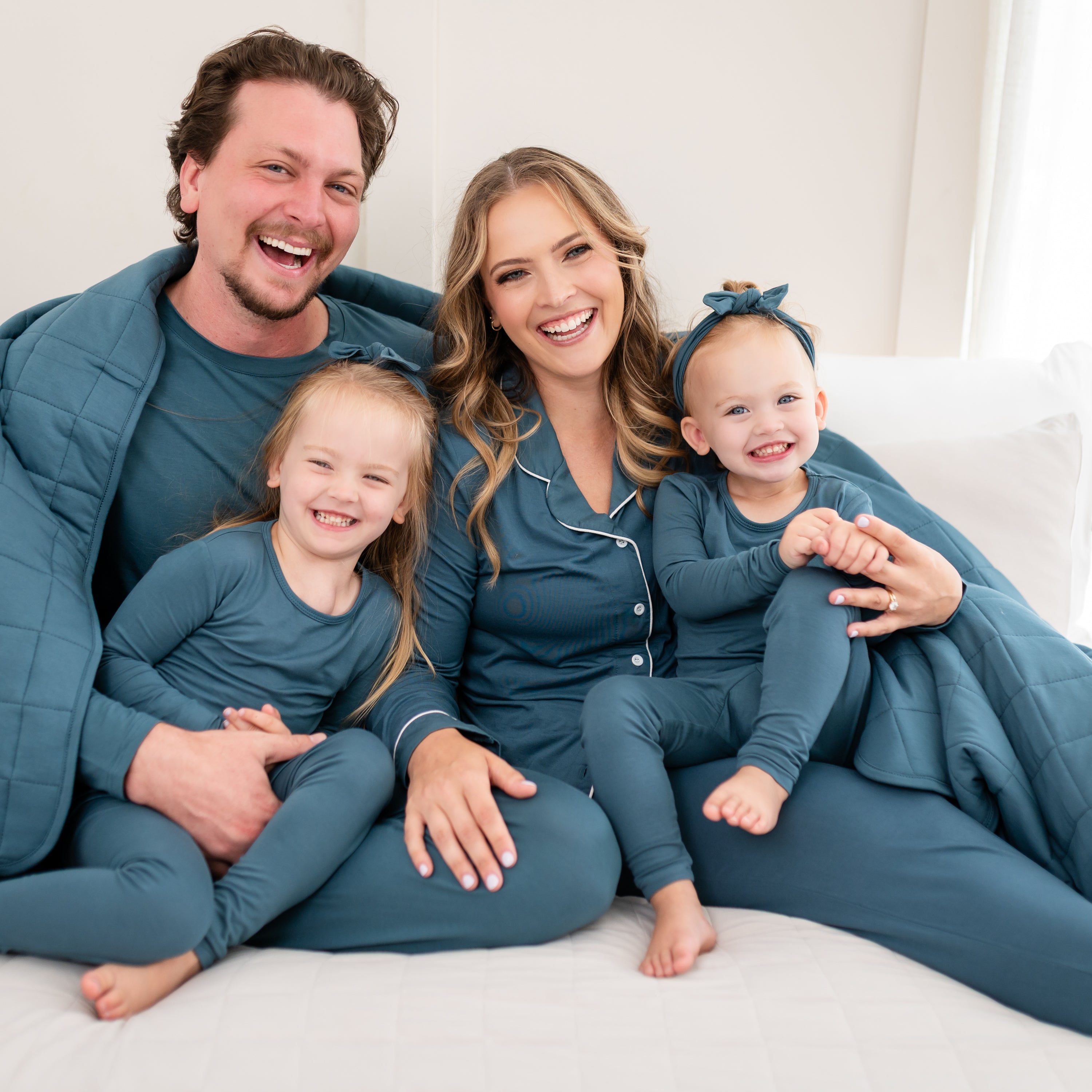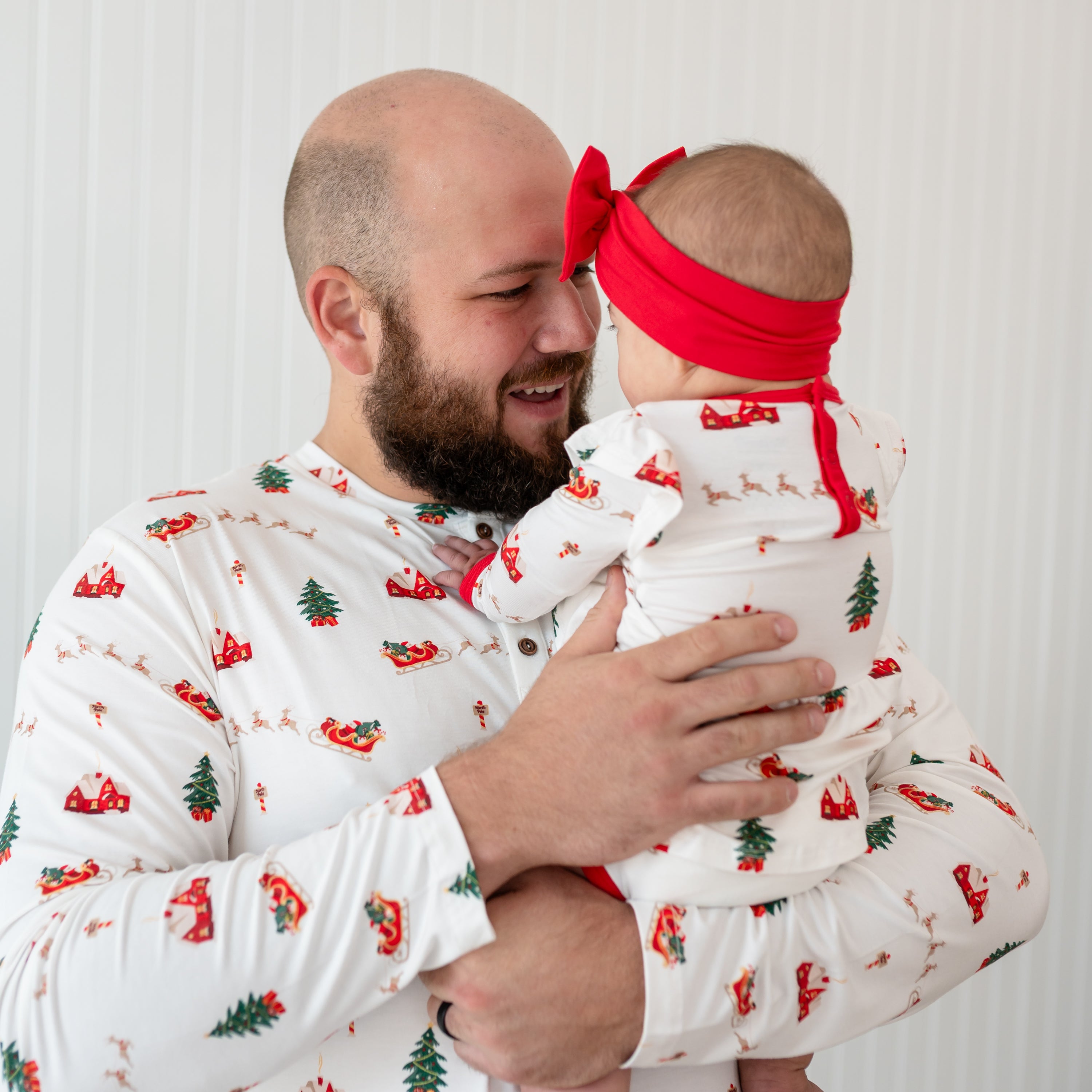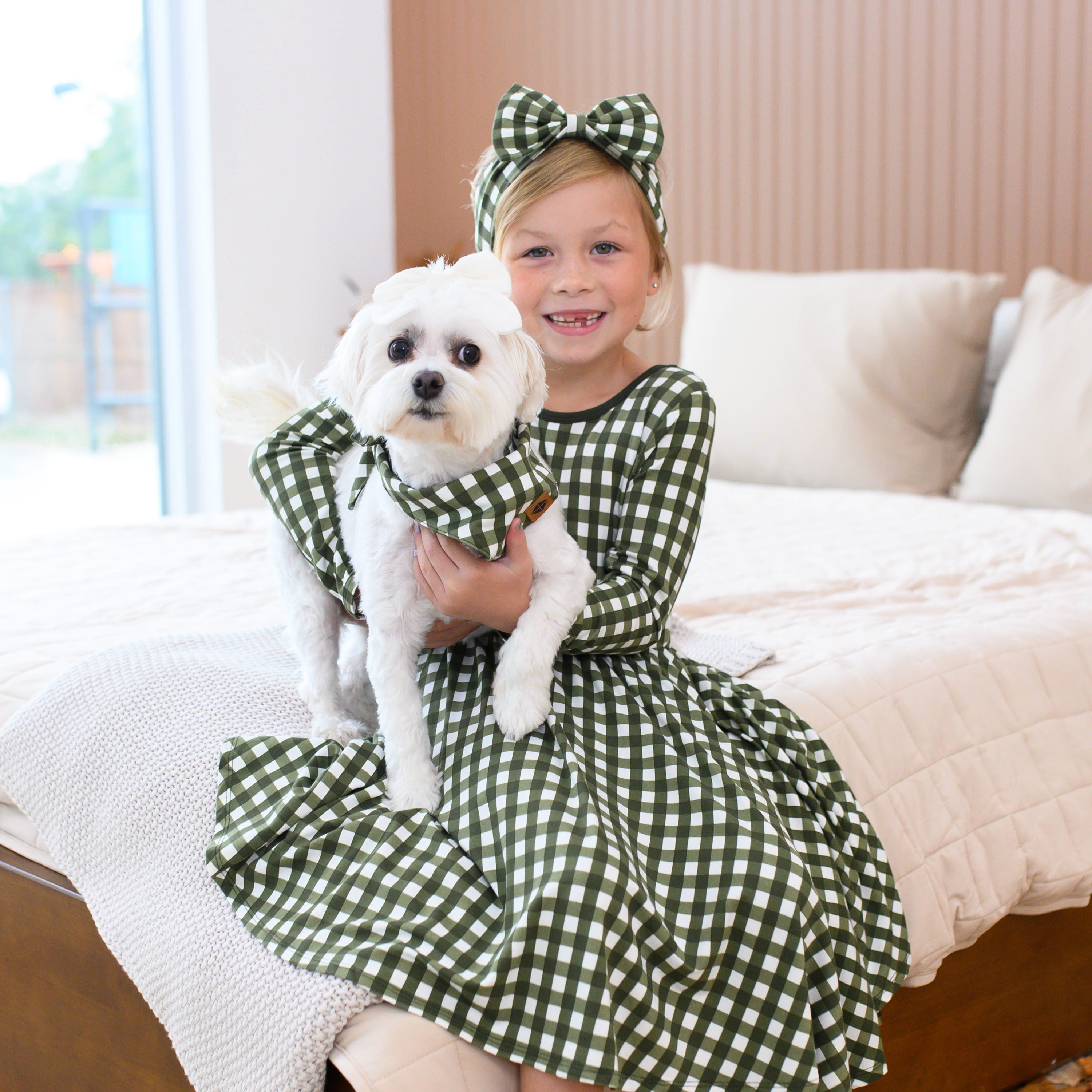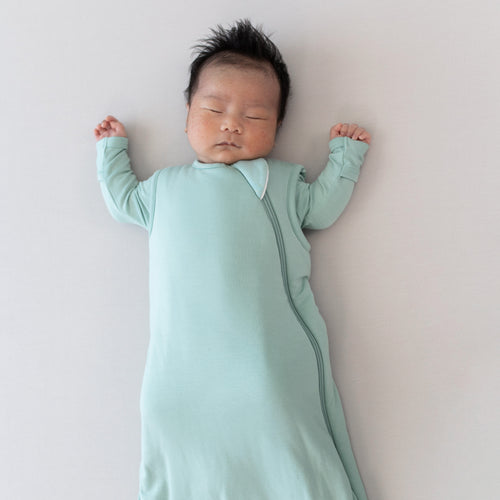Sleep regression - a dreaded term everywhere for parents! Just when you find your groove with sleep, it feels like all the progress has gone out the window. You may have even bragged about your little one’s sleep at some point...and you’re now eating those words.
It doesn’t have to be that way! In this blog, we will talk about what a sleep regression is, the sleep regression ages, tips to handle the 5 most common sleep regressions in babies, and maybe some extra tips for a solid sleep foundation.
What is a Sleep Regression?
This is just a temporary set back from your normal (good) sleep habits to some extra night wakings or short naps. It can also look like having a hard time falling asleep, lengthy night time wakings, or early mornings! Oh, and also refusing naps entirely.

No wonder it’s so frustrating for parents! This period can last from 2-4 weeks as your child goes through a physical development, cognitive development, or change in sleep needs. So what can you expect during a sleep regression? A cranky/fussy baby, some overtiredness, clinginess or separation anxiety, and interrupted sleep.
Sleep Regression Ages
The most common sleep regression ages are:
- 4 months
- 8 months
- 12 months
- 18 months
- 24 months
Sleep Regression at 4 Months
The 4 month sleep regression can technically happen any time between 3-6 months or so. This is the only regression that is actually a permanent change to how your child sleeps. Their sleep cycles naturally mature from newborn sleep cycles (light/deep) to adult sleep cycles, where we have 5 sleep cycles.
This means they have more opportunities for waking up! Sounds like the 4 month sleep regression, huh? Some other important things happen around this time: rolling (a physical development) and the 4-3 nap transition (sleep needs change).
Remember, every “regression” is actually a “progression” because they are moving along in their development!
Sleep Regression at 8 Months
The 8 month sleep regression can occur between 8-10 months, typically. This regression is usually due to 3 things: sitting, crawling, standing (physical development), absorbing language (cognitive development) and they are transitioning to 2 naps if they have not already (change in sleep needs).
Research shows that crawling is usually the most disruptive skill for sleep!
Sleep Regression at 12 Months
The 12 month sleep regression usually looks like nap refusals (particularly the second nap). This can be mistaken for needing to drop a nap, but most babies will return to taking both naps after 7-14 days and will have a few more months of 2 naps before transitioning to 1!
Some other causes to this sleep regression include learning to cruise or walk (physical development) and babbling/words (cognitive development).
Sleep Regression at 18 Months
The 18 month sleep regression is marked by something new… discipline and independence! Their language is taking off, experiencing some separation anxiety, they may be learning to run and jump, and if you haven’t already, most are transitioned to 1 nap by now. Can you spot the cognitive + physical developments and the sleep need changes?
Sleep Regression at 24 Months
The 24 month sleep regression is the last official regression you’ll have to deal with-- yay! This looks like: your toddler suddenly waking up during the night after sleeping through the night consistently, and may even resist taking naps, sometimes skipping them totally. Why? Your two-year-old may be going through significant life changes – oftentimes things like learning to potty-train, moving into a big-kid bed, anticipating a younger sibling being born – happen around this age.
Your little one may also still be working on cutting both sets of molars or entering a timeframe where they stay awake longer before/after naps and before bedtime. True nightmares, fears of things like the dark and another round of separation anxiety also come into play at this age, all contributing to shorter nights and exhausting days.
Tips to Handle Sleep Regressions in Babies
So now we know why the sleep regression happens but how do we handle it?!
- Stay consistent and keep your routines. While everything is changing for your child’s world, we want to be the calm to their chaos.
- Keep the routines calming and add more wind down time if they’re having trouble transitioning from playing to sleeping.
- Maintain your sleep environment (dark, cool, and use white noise) and use a Kyte Baby sleep bag as a sleep cue.
- Comfort them, soothe them, meet them where they’re at BUT you can do that without immediately doing all the work for them!
- Alter your sleep schedule if needed-- double check their sleep needs and see if an adjustment is needed.
- Ask for help! This is the time for your village. If you need someone else to handle bedtime for a night, if you need someone to give you a break.. Whatever it is, ask for it.
Building a Solid Sleep Foundation
How can you have a solid sleep foundation so that sleep regressions are just a blip, if anything to your child’s sleep? We want to make sure we have:
But we also want to make sure they can fall asleep on their own in their sleep space, which may require some sleep training. This makes it more likely for them to return to sleep on their own, thus disrupting their sleep less during regressions.
About the Author:
Ashley Olson is a certified pediatric sleep consultant, owner of Heaven Sent Sleep, and passionate about helping new parents, experienced parents, desperate and sleep deprived parents form healthy sleep habits for their children.
She has over 3 years of experience in working with families and has completed over 150 hours of coursework plus continuing education related to infant and toddler sleep. The focus of her work is on fostering a routine that grows your bond with your child while improving their sleep habits. She specializes in custom sleep plans and one on one support in changing sleep practices!




























